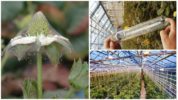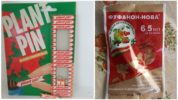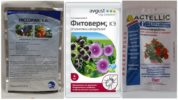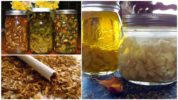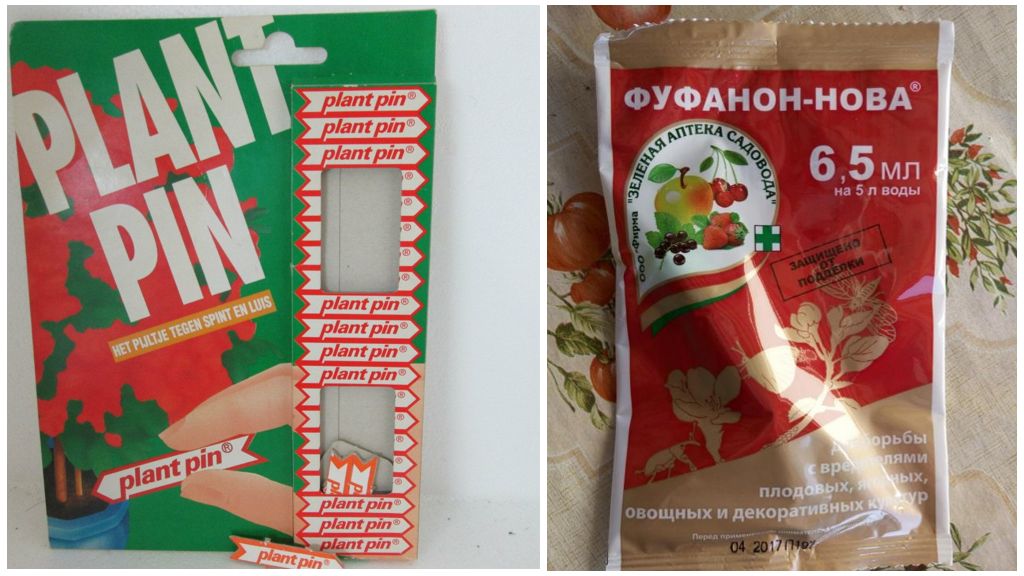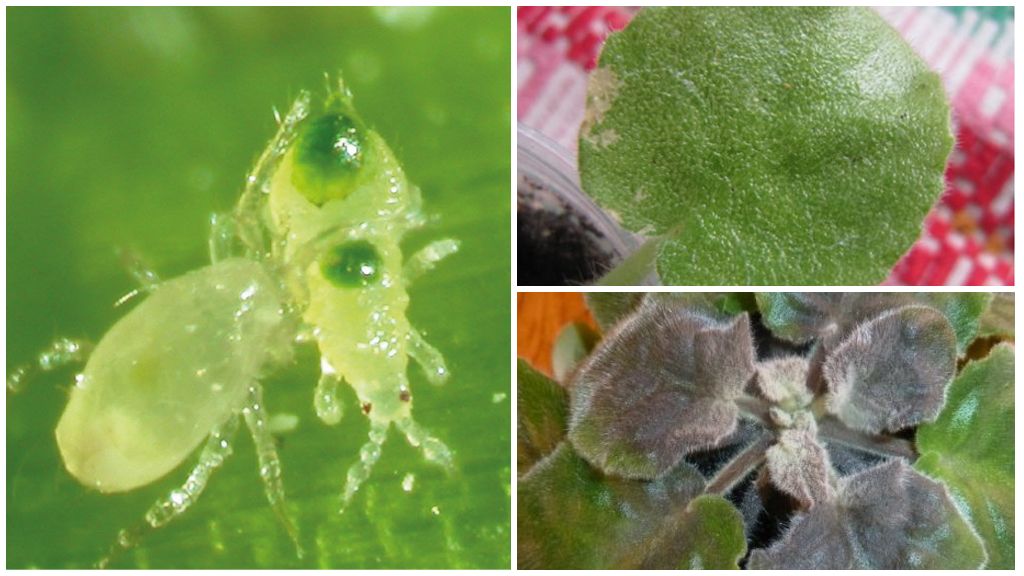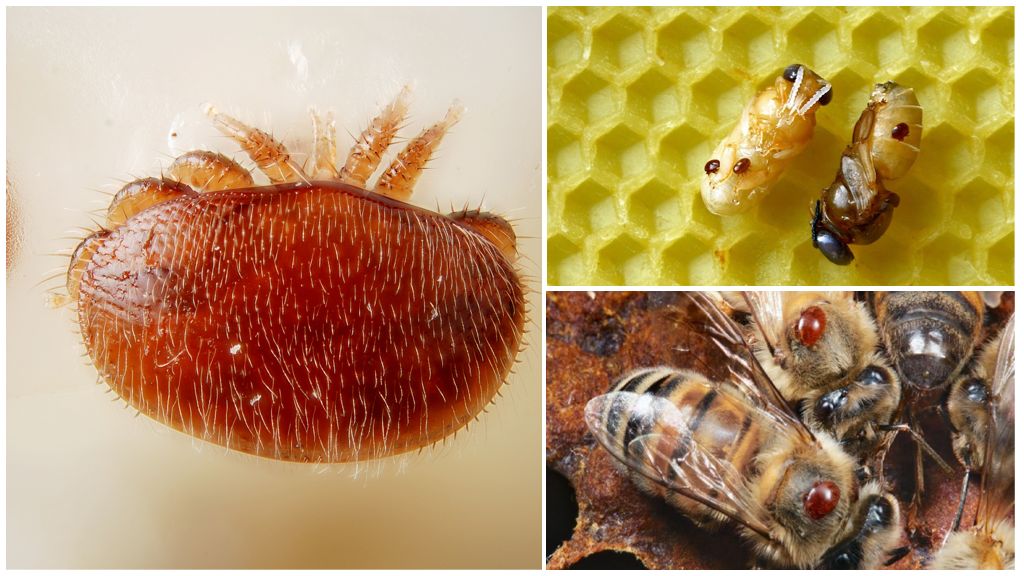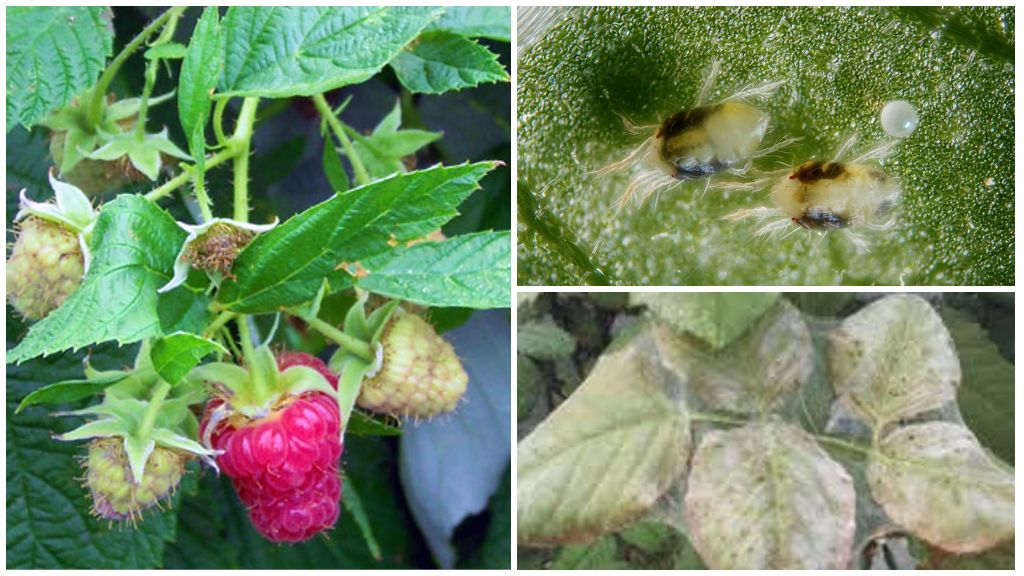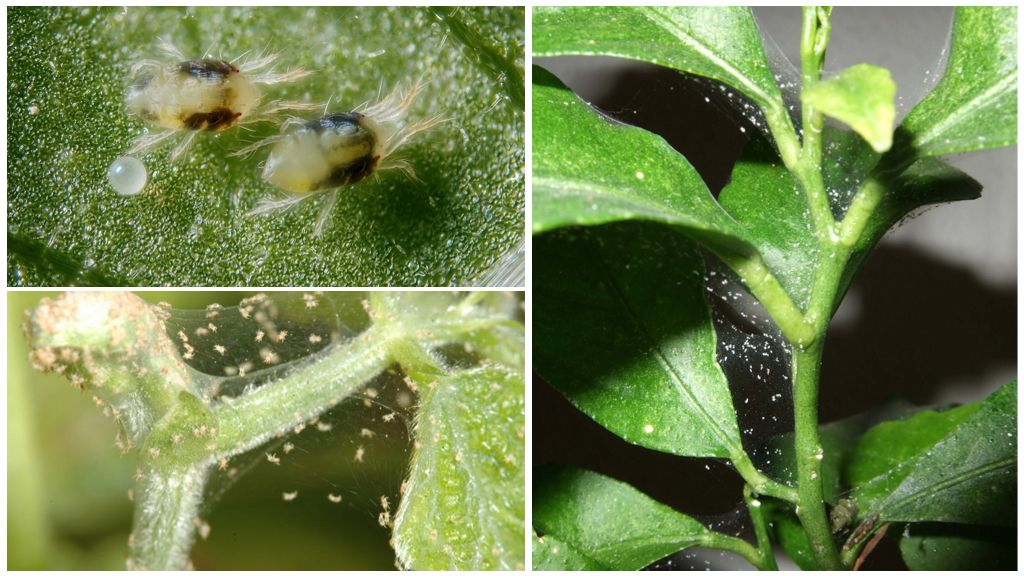- Spider mite
- UV lamp for combating spider mites
- Spider mite insecticides
- Spider mite insecticides
- Folk recipes for spider mites
Spider mite - A common occurrence in greenhouse facilities. The pest loves heat, moderate humidity. It affects about 200 cultures, among them decorative plants, vegetables, berries. Most susceptible to attack cucumbers, tomatoesbell peppers and eggplant. Wrecking is fraught with loss of leaf mass, reduced yield. Choosing a way to get rid of a spider mite in a greenhouse, they are guided by the areas in need of processing, the extent of the lesion.
Appearance and signs of infection
The parasite is not characterized by large dimensions, the length of the oval body hardly reaches 0.5 mm. In the spring-summer period, the color is yellow, greenish. In late August, early autumn, females become orange, red. The spider mite does not belong to insects, it is arachnid. As expected representatives of arachnids, the imago has 4 pairs of legs.
On a note!
Only fertilized females leave for the winter. These individuals are very resistant to low temperatures and survive even if the level of the thermometer reaches -25 ° C.
They hibernate in plant debris, at a temperature of + 15 ° C they leave their shelters. Settles on the underside of leaf plates. Females begin laying eggs, which they cover with cobwebs. The fertility of each individual is 140-150 eggs, the full development from embryo to imago is 7-20 days, so the spider mite colony grows rapidly. During the season, 2-3 generations are generated, in heated greenhouses pests multiply year-round.
They feed on arachnids with vegetable juices. It is possible to suspect that spider mites appeared in the greenhouse by the following characteristic signs:
- In places of punctures on the plant dark dots appear. Ticks suck out chlorophyll grains, which discolor the diseased leaves, which look like marble.
- Subsequently, the leaf plates become brown, dry out and die.
- The presence of a silky web.
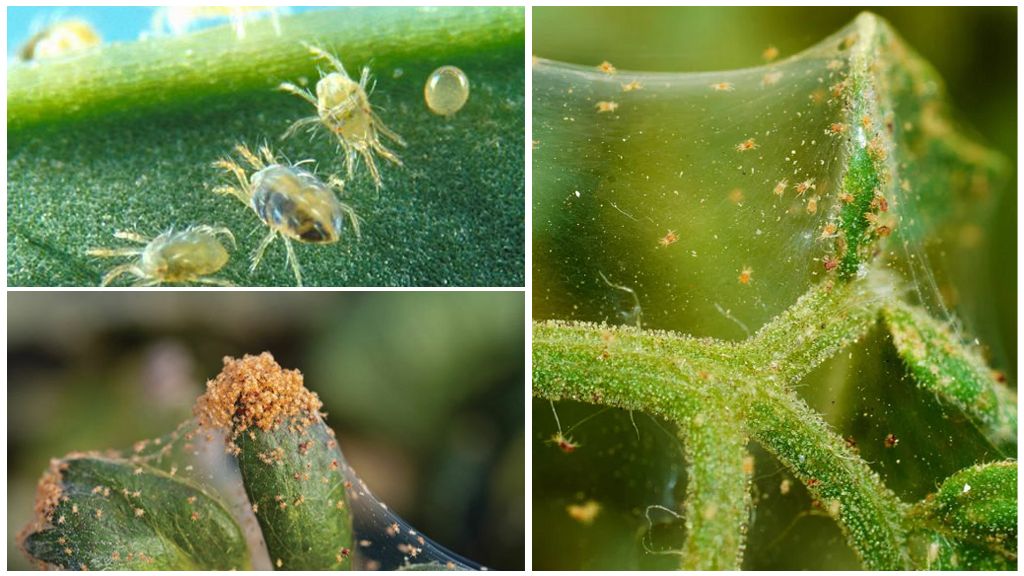
On a note!
Favorable conditions for the development of a spider mite are a temperature of + 30 ° C and a humidity of not higher than 50%.
Spider mite control measures
In open ground, prolonged rains and natural enemies can contribute to a decrease in population. However, it is not always advisable to abuse watering in greenhouse facilities, since not all crops like excess moisture. The fight against spider mites involves agrotechnical measures, processing of the greenhouse, the use of biological products and chemicals for spraying plants, with mild infection, it is possible to use alternative recipes.
Important!
Whatever method is chosen, it should be borne in mind that almost no tool kills spider mite eggs. Also, the web prevents the penetration of the active components, therefore, the processing of crops must be carried out 2-3 times with an interval of 6-8 days in order to destroy the newly emerged pests from eggs.
What to do when a spider mite appears:
- Remove weeds in and around the greenhouse, which are an additional springboard for the development and reproduction of pests.
- Temporarily stop feeding with nitrogen, phytohormones, amino acids. Fertilizers with a content of calcium, phosphorus, and potassium contribute to a decrease in the number of ticks.
- If the conditions for growing crops allow you to increase the humidity in the greenhouse by increasing the number of sprayings, irrigation.
- According to reviews, the use of UV lamps gives a good effect in the fight against ticks. Such lamps improve photosynthesis, which allows plants to withstand the harmful activities of arachnids. They also have a detrimental effect on microorganisms and disinfect the greenhouse.
- To cut and burn strongly affected leaves of plants.
- To process cultures with the chosen store or folk remedy. After 24-48 hours, it is necessary to evaluate the effect of the procedure. For this, a control plant is selected. If, when viewed under a magnifying glass after processing, numerous mites are visible on it, the drug should be replaced, since pests could develop resistance to it.
On a note!
The least labor-consuming and almost without human involvement method is to plant in the greenhouse lacewings or carnivorous and parasitiform ticks: amblyseius, phytoseyulus, metaseyulus. Each individual eats from 10 to 20 pests per day. Bioagents multiply rapidly: the female lays up to 6 eggs, the developmental period to adults is 6 days. The most voracious predatory mites become at a moisture content of 65%. You can buy phytosailus in online stores. They are sold in small bottles, banks at a price of 1,500 rubles.
Product Overview
Effectively fight with a spider mite in a greenhouse on plants is possible through the following drugs:
- Anti-tick (from 64 to 95 rubles.). Sold in 10 ml vials. It is used in greenhouse constructions. To process tomatoes, cucumbers, 1 ml of the drug is diluted with 1 liter of water. This amount is enough for 10 m². The effect is observed after several hours and lasts for 10-15 days. Does not lose its properties at high temperatures.
- Plant Pin - a German tool in the form of sticks with the active substance - butoxycarboxy from ticks and aphids. It is most often used on balconies and in flower pots, but in small areas it can be used in a greenhouse. In the package of 20 pieces. Approximately at a distance of 2-3 cm from the stem, a stick is placed in the soil. When watering, the active component dissolves and enters the plant through the root system. Protective properties last 3-4 decades. Consumption: for every 100 cm² –1-2 sticks. Etisso works the same way, the price is from 650 rubles.
- Fufanon Nova - an insecticide based on malathion at a price of 19 rubles per ampoule of 6.5 ml. For processing vegetable crops, the contents of the ampoule are diluted with the same amount of liquid. Working solution consumption: 1.5 L per 10 m². In the greenhouse, only one treatment with this agent is allowed. It can not be used during the ripening period. Watering levels the effect of the product.
- Omayt 57KE, 30SP, VE - preparations help to destroy the spider mite at all stages of development, but are safe for predatory species of ticks, bees. Available in liquid or powder form, which require dilution with water before use. Omight is resistant to humidity, temperature, but the greatest efficiency is achieved at a temperature of + 25 ° C. The result of using the product is noticeable 1-3 days after treatment, prolonged action lasts up to 4 decades. A 2 ml bottle costs 39 rubles, a 1 liter canister costs 2200 rubles.
- Neoron (75 rubles). Remedy for spider webs and gall mites. For the destruction of pests, one treatment is enough, since the action lasts up to 3 weeks. Additionally strengthens plants and promotes their growth. Working solution is not subject to storage.
- Karate Zeon is a microencapsulated suspension.Used for processing leaves of tomatoes, cabbage, berries. Most effective for the destruction of pests on ornamental plants. A 5 liter canister costs 9500 rubles.
- Apollo - the product is sold in different packaging. The smallest - 2 ml costs 50 rubles. Safe for pollinating insects. The drug inhibits the reproductive function of adult ticks, thereby preventing their reproduction, destroys the larval forms of pests.
- Akarin (formerly Agravertin). The price is 19 r per bottle of 4 ml. In addition to leaf-eating parasites in the greenhouse, it is effective against gall nematodes. Not addictive to arthropods. Use is allowed even during harvesting. To reduce the consumption of the drug, fine spraying is recommended. Already after 8-10 hours after treatment, the pests stop eating, moving, and after 2-3 days they die.
- Bicol - a biological agent acts similarly to the previous drug. It is realized in powder form. The action lasts 5-7 days.

To destroy the spider mite in the greenhouse, the following tools are also used: Tick-borneNissoran, Fitoverm, Scelta, Actellik, Demitan, Spark bio.
Important!
Chemical spraying of plants must be carried out in protective uniforms: glasses, a respirator, clothing covering the body. The green mass of plants should be densely covered with a working solution, but its draining from leaves should be avoided. Before use, it is necessary to carefully study the instructions, since not all acaricidal drugs apply during flowering, fruiting.
Folk recipes
Folk remedies are inferior in effectiveness to chemical and biological drugs. However, with a small scale, lesions can be very effective. The main disadvantage is the need to prepare mixtures and conduct several treatments.
The following recipes are popular:
- Grind 400-500 g of roots or leaves of dandelion, pour 10 liters of water at room temperature. The finished solution is treated with infected plants. As a preventive measure, irrigation is carried out when the first leaves appear.
- To insist 350 g of tobacco and 10 l of water during the day, strain, add the same amount of liquid and grate 50 g of laundry soap.
- Grind 250 g of garlic in a convenient way for yourself, combine with 2 l of water. After 5 days, filter. To prepare the working solution, 60 ml of garlic tincture, 50 g of soap and 10 l of water are mixed.
- Tomato or potato tops tightly put in a bucket, pour warm water. After 5-6 hours, the mixture is ready for processing plants from spider mites.
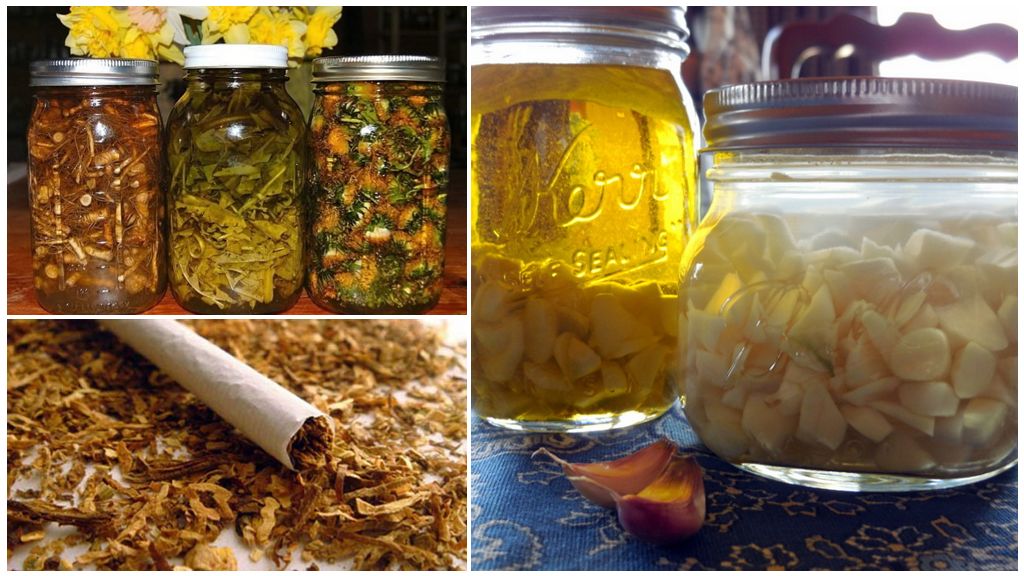
Greenhouse and soil processing
Wintering individuals are very resistant to low temperatures, so only digging the soil does not always save from the spider mite. Sometimes they disinfect the soil by steaming. The top layer of the substrate is removed, placed in a tank, which is installed over a tank of boiling water. It is possible to cultivate the land in autumn and spring with Bactofit, Baikal, a solution of copper, formalin. One effective way is to replace the soil.
To process a greenhouse from a spider mite in spring, you can use sulfur checkers. This allows you to destroy all pests, not only on the surface of the soil, but also hiding in frames, crevices and other places.
Preventative measures
Prevention of the appearance of a spider mite involves a number of measures:
- Autumn and spring processing of the greenhouse.
- Destruction of plant debris in the fall, weeds.
- Maintaining a humidity of at least 50% in the greenhouse.
- Periodic inspection of plants.
- Landing quality material.
- Processing the frame, greenhouse frames with soapy water, kerosene.

